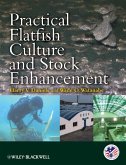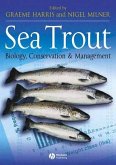The collapse of many of the World's fisheries continues to be of major concern and the enhancement of fish stocks through techniques such as ranching is of huge importance and interest across the globe. This important book, which contains fully peer reviewed and carefully edited papers from the 2nd International Symposium in Stock Enhancement and Sea Ranching is broadly divided into sections covering the following areas:
Stock Enhancement and Sea Ranching has been written and edited by some of the world's foremost authorities in fisheries science and related areas and is essential reading for all fisheries scientists throughout the World. Fish biologists, marine and aquatic scientists, environmental biologists, ecologists, conservationists, aquaculture personnel and oceanographers will all find much of use and interest within this book. All libraries within universities and research establishments where these subjects are studied and taught should have copies of this book on their shelves.
- The present situation of stock enhancement
- Seed quality and techniques for effective stocking
- Health management of hatchery stocks
- Methods for evaluating stocking effectiveness
- Population management in stock enhancement and sea ranching
- Management of stocked populations
- Ecological interactions with wild stocks
- Genetic management of hatchery and wild stocks
- Socio-economics of stock enhancement
- Case studies
Stock Enhancement and Sea Ranching has been written and edited by some of the world's foremost authorities in fisheries science and related areas and is essential reading for all fisheries scientists throughout the World. Fish biologists, marine and aquatic scientists, environmental biologists, ecologists, conservationists, aquaculture personnel and oceanographers will all find much of use and interest within this book. All libraries within universities and research establishments where these subjects are studied and taught should have copies of this book on their shelves.
Dieser Download kann aus rechtlichen Gründen nur mit Rechnungsadresse in D ausgeliefert werden.
"A very important book about a very important subject. Searanching, quite clearly, represents a large part of the future ofthe global seafood industry.
This all-encompassing book, which comprises forty well consideredpapers looks at many of those problems and offers numeroussolutions to them."
Professional Fisherman
"This book brings an enormous amount of information onpast experiences and ongoing studies into one easy-to-read source..[it] is an excellent compendium of often hard-to-find publishedexamples...Stock Enhancement and Sea Ranching is awell-prepared and timely book...an excellent survey of activitiesand issues...will be very valuable as a reference source foranyone interested in stock enhancement and searanching."
Fish and Fisheries, 2005
"...the book does provide a broad and up to date overview of thestate of marine stock enhancement research. Those directly involvedin the field will want it on the shelves, and subject librariesshould have it available for reference."
Journal of Fish Biology, December 2005
"This book is an excellent overview of the current state ofartificial supplementation of marine fisheries and outlines currentdebates for responsible use of this technology."
Reviews in Fish Biology and Fisheries, 2005
"This authoritative volume, which contains 40 fullypeer-reviewed papers presented at the Second InternationalSymposium on Stock Enhancement and Sea Ranching, held in Japan, isessential reading for anyone interested in 'the state of the art'of stock enhancement and sea ranching."
African Journal of Aquatic Science, 2005
This all-encompassing book, which comprises forty well consideredpapers looks at many of those problems and offers numeroussolutions to them."
Professional Fisherman
"This book brings an enormous amount of information onpast experiences and ongoing studies into one easy-to-read source..[it] is an excellent compendium of often hard-to-find publishedexamples...Stock Enhancement and Sea Ranching is awell-prepared and timely book...an excellent survey of activitiesand issues...will be very valuable as a reference source foranyone interested in stock enhancement and searanching."
Fish and Fisheries, 2005
"...the book does provide a broad and up to date overview of thestate of marine stock enhancement research. Those directly involvedin the field will want it on the shelves, and subject librariesshould have it available for reference."
Journal of Fish Biology, December 2005
"This book is an excellent overview of the current state ofartificial supplementation of marine fisheries and outlines currentdebates for responsible use of this technology."
Reviews in Fish Biology and Fisheries, 2005
"This authoritative volume, which contains 40 fullypeer-reviewed papers presented at the Second InternationalSymposium on Stock Enhancement and Sea Ranching, held in Japan, isessential reading for anyone interested in 'the state of the art'of stock enhancement and sea ranching."
African Journal of Aquatic Science, 2005









